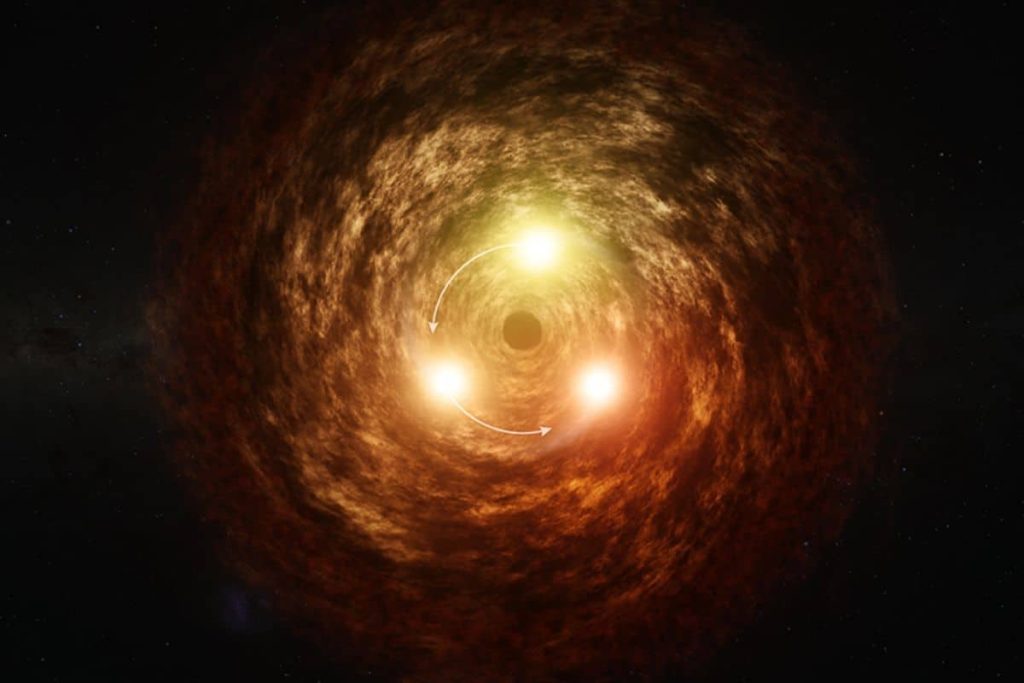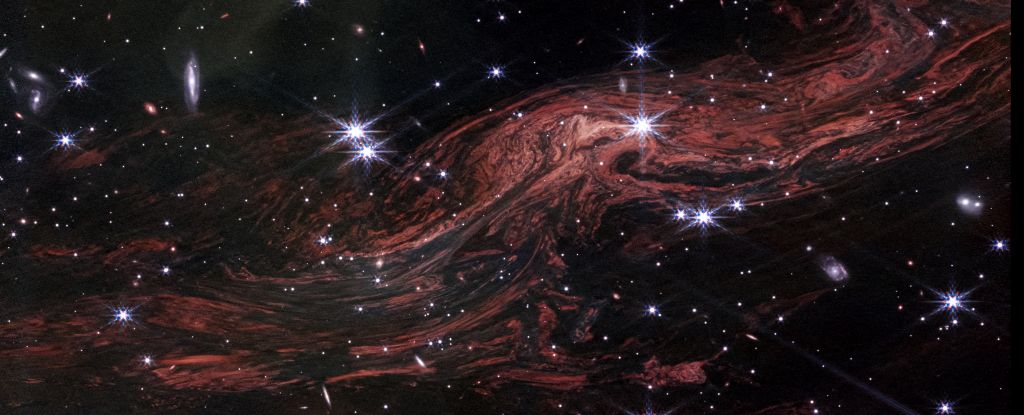World’s Closest Supermassive Black Hole Caught in Action – Here’s What Happened! – The Daily Galaxy –Great Discoveries Channel

This new observation, soon to be published in The Astrophysical Journal Letters, delves into the enigmatic Sagittarius A*, offering tantalizing clues that may finally unlock the secrets surrounding this massive cosmic entity. What does this latest revelation mean for our understanding of the galactic center, and how could it impact the study of black holes across the universe? The answers are closer than ever, but you’ll have to wait for the full story.Astronomers have achieved a breakthrough in observing Sagittarius A*, the supermassive black hole at the center of the Milky Way galaxy. Known for its relative calm compared to more active black holes, Sagittarius A* continues to surprise scientists.On April 6, 2024, using the James Webb Space Telescope (JWST), researchers documented a phenomenon never seen before: a flare in mid-infrared wavelengths. This unprecedented event provides new insights into black hole behavior, marking a significant step forward in astrophysical research.Sagittarius A*, weighing 4.3 million times the mass of the Sun, is the closest supermassive black hole to Earth. Despite its quiescence compared to other black holes, it occasionally produces energetic outbursts or “burps.” On this occasion, JWST captured a mid-infrared flare lasting approximately 40 minutes.This mid-infrared emission is a first, filling a crucial gap in understanding the physical processes at work in Sagittarius A*. Previously, scientists relied on observations in radio and near-infrared wavelengths, but the absence of mid-infrared data left questions unanswered.“Sagittarius A*’s flare evolves and changes quickly, in a matter of hours, and not all of these changes can be seen at every wavelength,” explains Joseph Michail of the Smithsonian Astrophysical Observatory. “For over 20 years, we’ve known what happens in the radio and Near-infrared (NIR) ranges, but the connection between them was never 100 percent clear. This new observation in mid-infrared fills in that gap,” he added.The observation was made possible by combining data from multiple state-of-the-art instruments. Alongside JWST’s mid-infrared instrument (MIRI), researchers utilized the Submillimeter Array, NASA’s Chandra X-ray Observatory, and the Nuclear Spectroscopic Telescope Array, a gamma-ray observatory aboard the International Space Station.Interestingly, while X-rays and gamma rays were not detected, the Submillimeter Array identified a radio wave flare occurring 10 minutes after the mid-infrared flare. This timing difference aligns with models of synchrotron radiation, a process where electrons accelerate along magnetic field lines, emitting energy as they cool.“Because mid-infrared sits between the submillimeter [far-infrared to microwave] and the near-infrared, it was keeping secrets locked away about the role of electrons, which have to cool to release energy to power the flares,” says Michail.The findings suggest that the flare results from interactions in the accretion disk—a turbulent region of gas and dust surrounding the black hole.Understanding supermassive black hole behavior is crucial for unraveling the mysteries of the cosmos. These massive entities serve as the gravitational anchors of galaxies, influencing their structure and evolution. By studying Sagittarius A*, scientists gain insight into the mechanisms driving both quiet and active black holes.Sagittarius A*’s relatively calm nature offers a unique advantage. Unlike its more voracious counterparts, its weaker flares allow astronomers to study small-scale processes that would otherwise be obscured in more chaotic environments.While this observation fills a critical gap, it also highlights how much remains unknown. Researchers aim to continue monitoring Sagittarius A* using advanced telescopes like JWST. The interplay between magnetic fields, electron acceleration, and radiation emission remains a rich area for investigation.“While our observations suggest that Sgr A*’s mid-infrared emission does indeed result from synchrotron emission from cooling electrons, there’s more to understand about magnetic reconnection and the turbulence in Sgr A*’s accretion disk,” says Sebastiano von Fellenberg from the Max Planck Institute for Radio Astronomy. The detection of a mid-infrared flare from Sagittarius A* is more than just a milestone in black hole research—it’s a testament to the power of modern astronomy. By leveraging cutting-edge instruments like JWST, scientists are piecing together the intricate puzzle of the universe.Sagittarius A* continues to captivate researchers and enthusiasts alike, offering glimpses into the extreme environments near black holes. Each discovery brings us closer to understanding the forces that shape galaxies and govern the cosmos.Got a reaction? Share your thoughts in the commentsEnjoyed this article? Subscribe to our free newsletter for engaging stories, exclusive content, and the latest news.Comment Save my name, email, and website in this browser for the next time I comment.
© 2024 | Daily Galaxy | All rights reserved
Source: https://dailygalaxy.com/2025/01/worlds-closest-supermassive-black-hole-caught-in-action/






